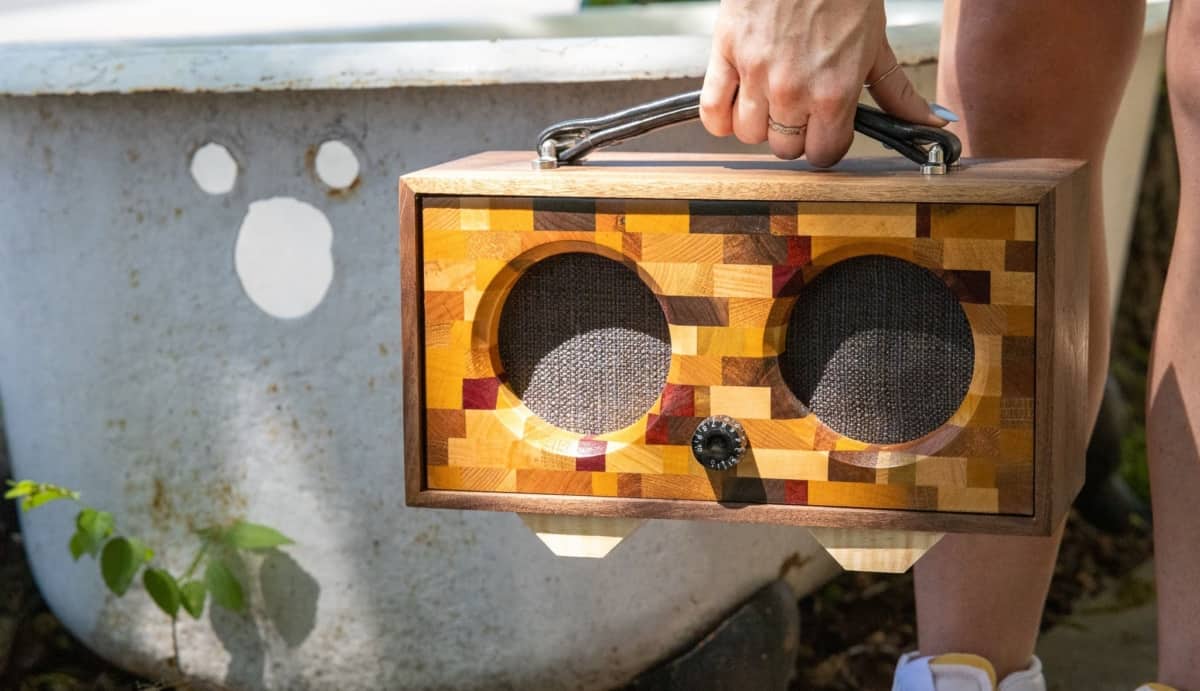
Jesse Frampton is the Tinkerer with a story to tell.
At Austin-based Tinker Audio, he designs and builds bespoke bluetooth speakers from old skateboard decks, unique types of wood, and reclaimed materials, like old furniture, ammo cans, gas cans, and other random items he finds.
His typical customers, he says, are affluent women who are buying for their husbands, boyfriends, or fathers. The speakers are commonly purchased as gifts.
“I look at pieces of wood and say, ‘I think this combination is going to be cool,’” he said. “Nine times out of 10, I get it right.”
The Birth of Tinker Audio
Frampton gained the technical know-how to build a well-functioning speaker by experimenting on his own.
“I knew it was possible, and so, because I knew it was possible, I knew I could figure it out,” he said. “I build cool stuff, and the only way to keep pushing it is to now get even weirder, even crazier.”
He first retrofitted a speaker in 2017 as a school project when he was getting his associate’s degree in graphic design in San Diego. Woodworking had always been a hobby of his, he said.
“Over the winter break, going into my last semester, I didn’t have enough projects,” Frampton said. “So I just built my first speaker. It was an old tube radio, and I kind of retrofitted it. And that was kind of my first foray trying this.”
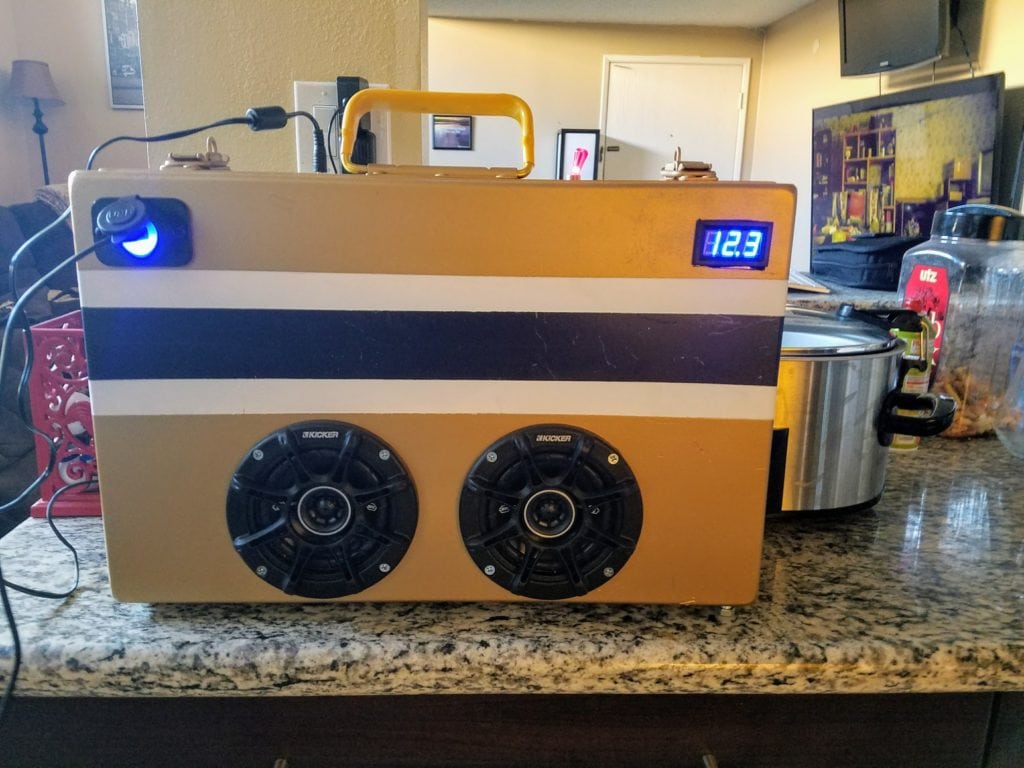
This is the first speaker Frampton built from scratch. He used his extra parts. 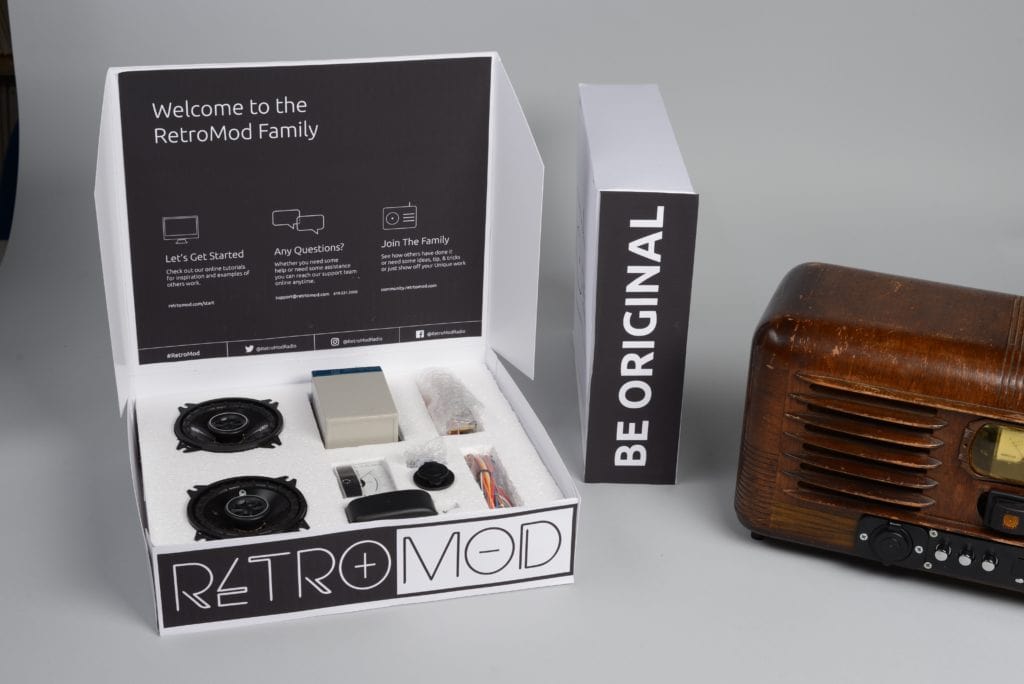
This is the “speaker kit” he created for his graphic design course.
As part of his project, Frampton had to display all the parts he used to make a kit, so he had an extra set of everything. From that, he built his first real speaker from scratch.
“It kind of took off from there,” Frampton said. “I built the first one and took it around to all the parties, and all my friends liked it.”
After that, he built his next speaker out of an Alexa. Then he built some as gifts. Eventually, he realized that there was something there.
Early on, he lit a few batteries on fire by accident, but after finding the right combination and the proper materials, he came to the basic design that he uses now.
His process begins with using a joiner to square the wood up, followed by a plater and a table saw to make the first square piece of wood. Next, he makes the miters, which are the angles that make the box fit together, and uses a router to make a rabbit on the inside, which gives the face something to stick to.
Then he uses a drill press with a hole saw bit, goes back to the router with a 45-degree sham, then finally, methodically, combines the pieces with glue, a staple gun, and a drill. Once he oils down the wood, he connects the wires.
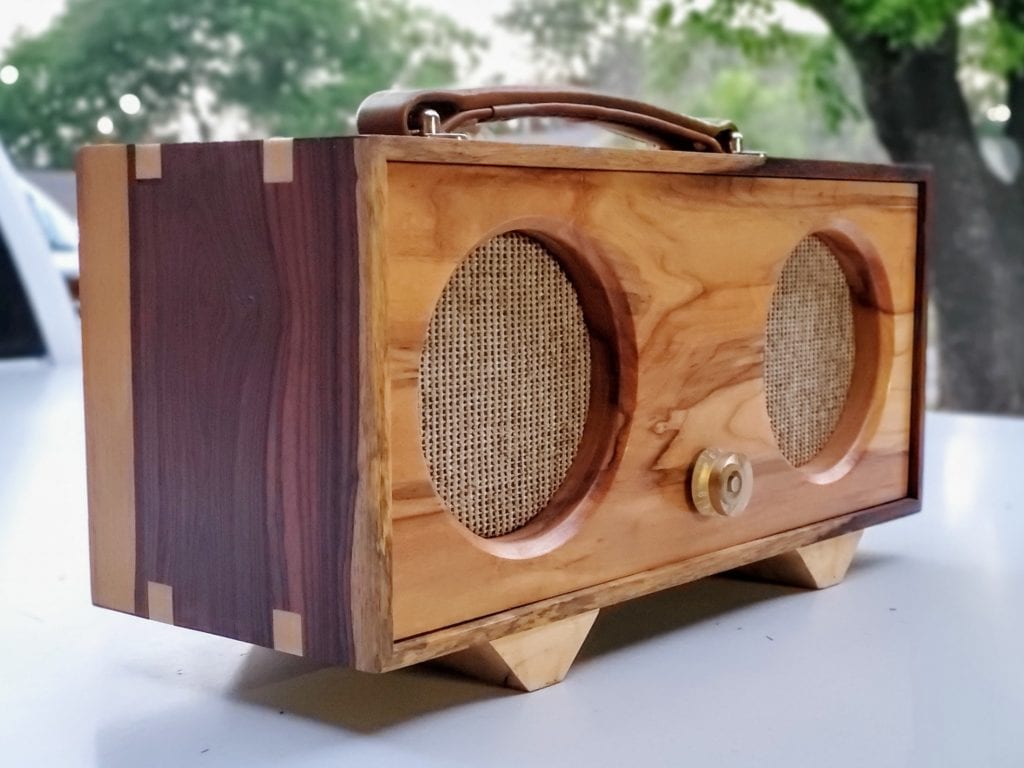
Establishing Customers in Austin
Frampton moved to Austin this February after graduating from graphic design school in December. He was looking for somewhere less expensive than California where he could find a graphic design job, afford rent, and still grow his speaker business.
He spent the first two months in Austin building six specialized cutting boards to make his speaker-building process more efficient. He spent $600 on just the wood for them. He mainly sources his lumber from Woodcraft and Fine Lumber. He also finds furniture and other materials on Craigslist.
In April, he set up at the Georgetown Second Street Market in April and sold seven speakers in a day. His speakers range in price from $250-$1,000.
Since Frampton works full-time at a furniture store, he purposely limits his marketing. If he received more orders, he wouldn’t have the bandwidth to keep up. To construct a speaker from an ammo can, once Frampton has the materials, it takes him a day or two. But it takes about two weeks to build the speakers made of wood. For the skateboard speakers, it takes an additional 3-4 days beyond that.
Growing Revenue to $24,000 in Less Than a Year
Frampton estimates that he has made around 300 speakers total. Between June and December of 2020, his revenue was about $24,000. With every speaker sold, he includes a “thank you” bag, a custom-designed and hand-signed letter, and a charger.
“I often get confused for being a much bigger company than I actually am because I present myself not as a guy building out of a one-car garage,” he said. “When you’re charging $600 for a speaker, you have got to pretend that you’re bigger than you are.”
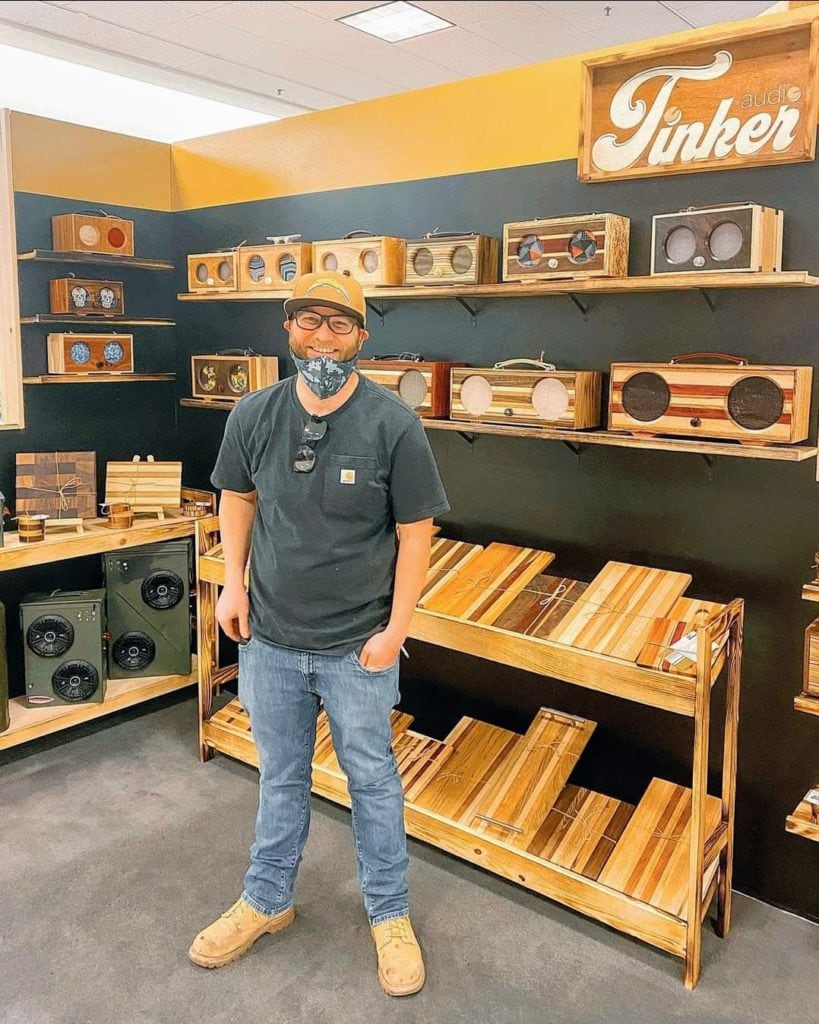
Frampton also takes promotional photos of his speakers and does the branding himself. He’s a one-man show.
“I think that’s something that I learned kind of early on about my speakers,” he said. “It’s not so much the speaker that people are buying. It’s the story around it.”
Besides Tinker Audio, another bespoke speaker maker in Austin is ATXRecordPlayers.com. To learn about other makers in Austin, click here.



